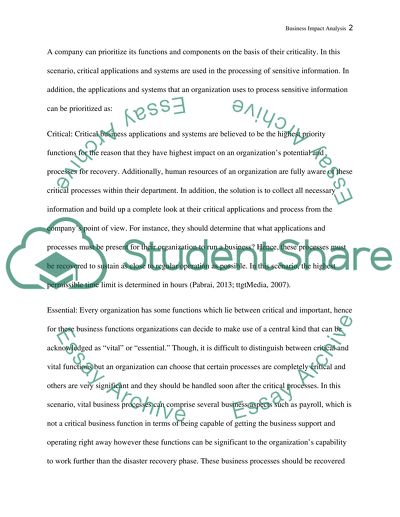Cite this document
(“Business Impact Analysis Essay Example | Topics and Well Written Essays - 1750 words”, n.d.)
Business Impact Analysis Essay Example | Topics and Well Written Essays - 1750 words. Retrieved from https://studentshare.org/information-technology/1468745-business-impact-analysis
Business Impact Analysis Essay Example | Topics and Well Written Essays - 1750 words. Retrieved from https://studentshare.org/information-technology/1468745-business-impact-analysis
(Business Impact Analysis Essay Example | Topics and Well Written Essays - 1750 Words)
Business Impact Analysis Essay Example | Topics and Well Written Essays - 1750 Words. https://studentshare.org/information-technology/1468745-business-impact-analysis.
Business Impact Analysis Essay Example | Topics and Well Written Essays - 1750 Words. https://studentshare.org/information-technology/1468745-business-impact-analysis.
“Business Impact Analysis Essay Example | Topics and Well Written Essays - 1750 Words”, n.d. https://studentshare.org/information-technology/1468745-business-impact-analysis.


